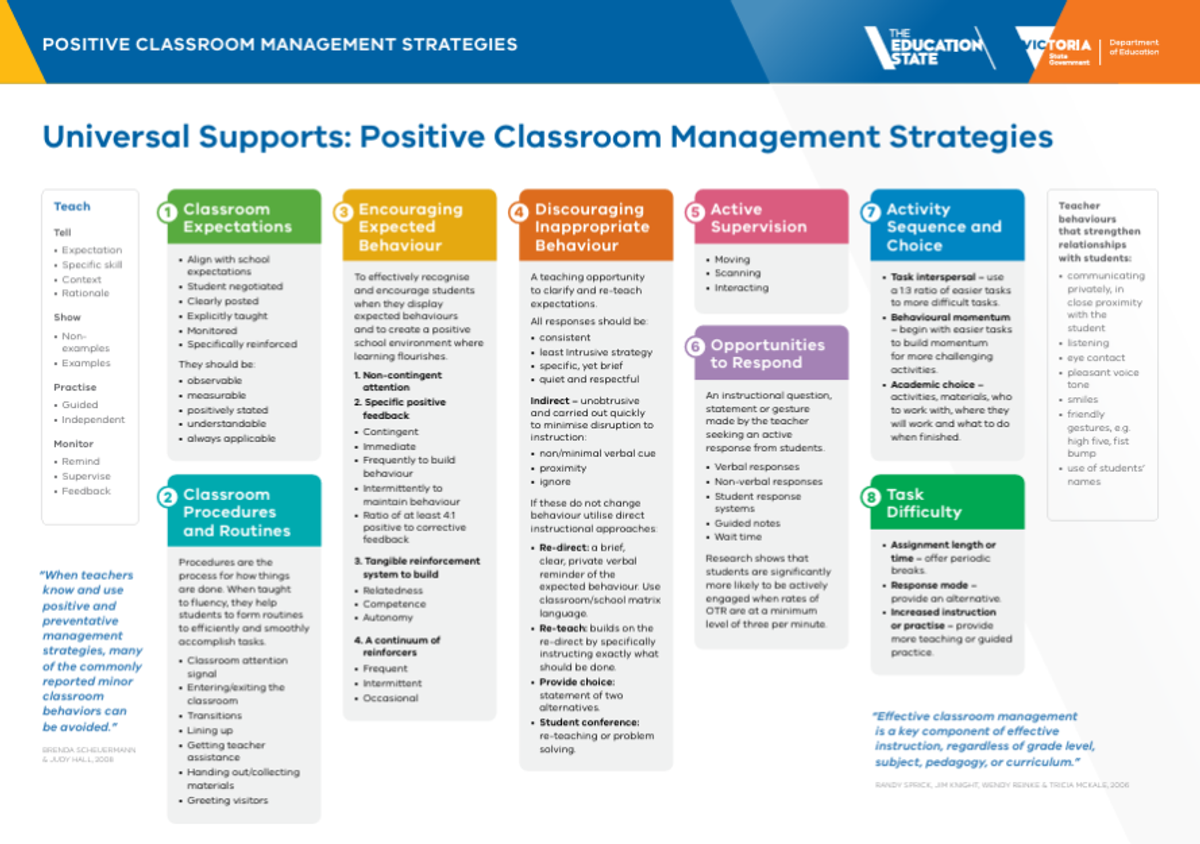Wellbeing
Fiona Dandie & Robert Pain

Wellbeing
Fiona Dandie & Robert Pain
PCMS: Positive Classroom Management Strategies
The Positive Classroom Management Strategies (PCMS) are a set of evidence-informed instructional practices that can be applied in any classroom setting to create safer, more purposeful learning environments that support student learning and wellbeing. At Whittlesea Primary School, staff use the 8 PCMS's in conjunction with our SWPBS strategies and school expectations.
The PCMS’s are founded on these guiding principles:
● Appropriate and inappropriate behaviours are related to the environment in which they occur. Environments can encourage appropriate or inappropriate behaviours.
● Behaviour is functional. Individuals learn to use behaviours to get their needs met. Behaviour that works is likely to continue.
● Behaviour can be taught. It is possible to teach alternative replacement behaviours to meet students’ needs more appropriately.
The eight PCMS's are practices that impact instructional time and positively impact engaged time, where students are actively engaged in learning. Below are each of the strategies and how they are utilised within our school.


This week, we are starting a series on different types of disabilities and learning difficulties.
Attention deficit hyperactivity disorder (ADHD) is a developmental disorder that begins in early childhood. ADHD used to be called attention deficit disorder (ADD).
ADHD is often misunderstood. It can cause problems:
This may cause people with ADHD to have problems with their:
Around 1 in every 20 Australians has ADHD. While ADHD is more common in boys, it’s underdiagnosed in girls and adults. More than 3 in 4 children diagnosed with ADHD still have symptoms as adults.
ADHD can present in 3 ways:
People with inattentive ADHD may have these symptoms:
People with hyperactive-impulsive ADHD may have these symptoms:
Some people have symptoms of both inattentive and hyperactive-impulsive ADHD.
People with ADHD have differences in their brain anatomy and function. The exact causes of ADHD aren’t known. Genetic studies show that ADHD is an inherited disorder.
Research has shown that ADHD symptoms are related to the biology of your brain.
It’s normal for people to get restless and distracted from time to time. But when you have ADHD, your symptoms are persistent and interfere with your work or school and friendships.
If you are concerned that you or your child may have ADHD, the first step is to see a doctor. They will most likely refer you to a psychologist.
A psychologist can only make a diagnosis after a detailed assessment of behaviour. Many behavioural disorders can cause symptoms of ADHD, especially in young children. It's important to have a proper assessment.